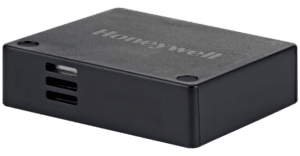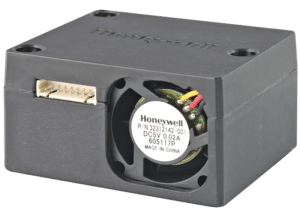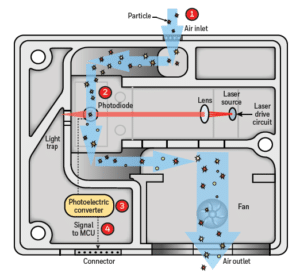Air Quality Monitoring | Honeywell
Improve the air in every breath you take
Air quality monitoring is becoming more and more popular since clean air has been a topic of many worried discussion during past year, and it and has been even more important when the Covic-19 pandemic hit the world. As one of the main measures taken in order to avoid spreading the virus all over the world has been: keep distance from others.
There are situations where people gathers together indoors and where effective social distancing is hard to achieve, such as at some offices and public transportation. Beside the preventive measures such as disinfecting hands, wearing face masks we can do a big change by continuously replacing as much air as possible with new clean air and through that considerable reduce the presence of virus particles.
When it comes to public transportation, bus and train companies – their main goal is to guarantee safe journey to both passangers as well their own drivers.
There are solutions to monitor indoor air quality by measuring the most common pollutants and allergens that increase the risk of health related issues, such as carbon dioxide (CO2), particulate matter (PM2.5), formaldehyde (HCHO), and total volatile organic compounds (TVOC as well as temperature and humidity. Honeywell offers HPM Series, a laser-based sensor which detects and counts particles using light scattering. and a portable HAQ Series air quality monitor.
HPM
The Honeywell HPM Series Particulate Matter Sensor is a laser-based sensor which detects and counts particles using light scattering. The detection concentration range is 0 µg/m3 to 1,000 µg/m3. A laser light source illuminates a particle as it is pulled through the detection chamber. As particles pass through the laser beam, the light reflects off the particles and is recorded on the photo or light detector. The light is then analyzed and converted to an electrical signal to calculate particle concentration. The Honeywell particle sensor provides information on the particle concentration for given particle concentration range.
Value to Customers
- Enables the ability to more accurately and cost-effectively monitor or control environmental particulate
- Industry-leading long life of 10 years of continuous use
- Proven EMC performance enables the ability to perform more accurately in a variety of tough industrial environments
- Faster response time of <6 s allows the HPM Series to respond to environmental conditions in real time
- Enhanced reliability allows for use in harsh environments
Features
- Laser-based light scattering particle sensing
- Concentration range: 0 µg/m3 to 1,000 µg/m3
- Fully calibrated
- EMC: Heavy industrial level IEC61000
- Response time: <6 s
- Supply current: 80 mA max.
- Output signal: UART (Universal Asynchronous Receiver/Transmitter)
- PM2.5, PM10 output (standard); PM1.0, PM2.5, PM4.0, PM10 output (compact)
- RoHS compliant
- REACH compliant
Differentiation
- Long life of 10 years offers a more stable operation for continuous usage
- Proven EMC performance, based on IEC61000 stable operation, ±15% accuracy (PM2.5)
Potential Applications
- HVAC (commercial and residential)
- Indoor air quality monitors
- Handheld air quality monitors
- Air purifiers (commercial and residential)
- Automotive cabin air purifiers
HPM Series Operation (top down view)
Engineered for excellent accuracy, the HPM Series employsa laser-based sensing approach that detects airborneparticulates with incredible accuracy.
The HPM Series operates in four key steps:
- The fan at the air outlet draws the air in through the air inlet.
- The air sample passes through the laser beam where the lightreflected off the particles is captured and analyzed.
- The photoelectric converter processes the signal into particlesize and density.
- The signal is transmitted to the micro control unit (MCU) wherea proprietary algorithm processes the data andsupplies outputs for the density of the particulate (μg/m3).














